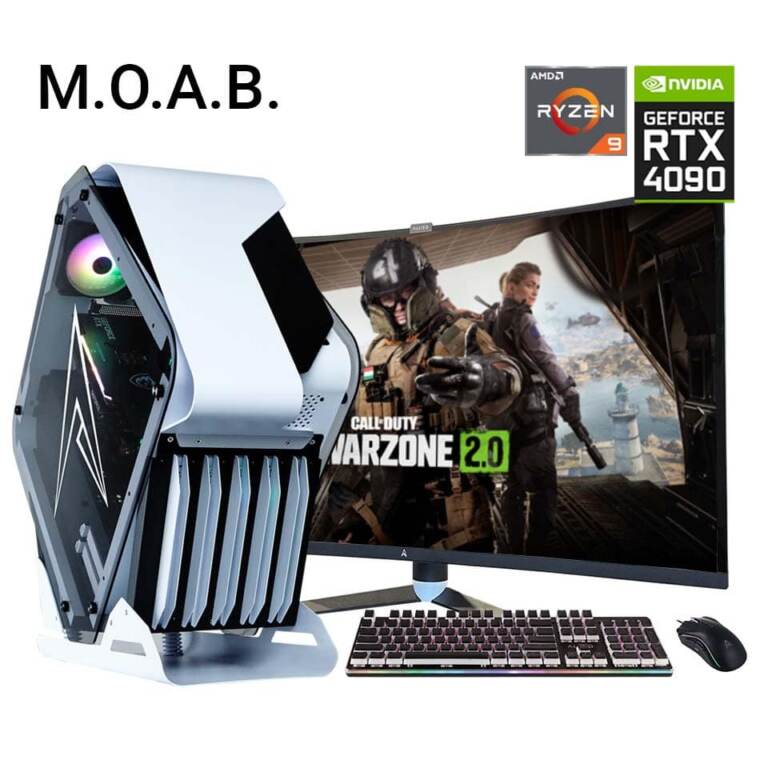
Into gaming around the hood? A laptop, rather than a desktop rig, might get your high score.
Failed to land a sub-second headshot and lost the game? Missed out by milliseconds picking up free loot? If so, you may already be committed to getting the absolute most out of your desktop gaming rig. The same applies if you’re dedicated to a racing or cockpit simulator— it’s not much fun moving all that gear around if you want to share the experience with friends!
If you’re jetting off to a friend’s house for a LAN party, you wouldn’t be alone if you preferred to carry a gaming laptop, rather than lug all your desktop and peripherals — monitor, keyboard, tac mat, mouse — it all adds up to a hefty bundle of tech to carry. And you’ll probably look like you’re stealing it. KEKW.
When you want to take your gaming experience mobile, you may want to think about a laptop with a performance gap that’s less than you might have imagined.
High-performance gaming hardware manufacturer, Allied Gaming, reports a user benchmark, simulated with a desktop-grade processor — the latest Core i7-10700K — versus a mobile version of the latest same-tier processor, the Core i7-10875H. The Core i7 10700K performed 11% faster compared to the mobile equivalent.
The result is surprising in terms of portable performance — but that performance comes at a cost. The price of a Core i7 notebook is considerably higher than its desktop counterpart. That means you’re paying a premium and dropping 11% in performance for the sake of portability.
That said, it’s obvious gaming laptops have come a long way.
The game’s not over, however. In the desktop versus laptop debate, there are a couple of other issues to consider — graphics card speed, and temperature.
Mobile processors and graphics cards are more greatly affected by high temperatures, as they’re limited to the cooling solutions currently available. Desktop processors and graphics cards are designed to be pushed to their limits and to higher temperatures, as there are more ways they can be effectively cooled to maintain stability — including standard air cooling, sealed liquid cooling (known as All-in-Ones) and custom water cooling, which includes custom water blocks, radiators, pumps and reservoirs. With a laptop, you’re basically stuck with custom CPU heat sinks or air-cooling solutions.
The same is true when you compare a desktop-grade graphics card with a mobile equivalent. The NVIDIA RTX 2070 Super desktop graphics card, for example, has a 25% faster effective speed over its mobile version, Max-Q. Even if laptops are running the same generation of hardware, the performance gap is obvious within gaming benchmarks on the low and high FPS scale — it comes down to wattage TDP (Thermal Design Power) limits, temperatures, and RAM dual channel speeds. Mobile processors lack the TDP limit of their desktop counterparts, which causes the processor to sit at a lower frequency to maintain stable temperatures within their TDP limit.
With desktops, there’s almost no limit to the customisation possible — memory, hard drives, solid-state storage, cases, components like graphics cards or new chipset platforms. Laptops, however, only allow for upgraded storage options that are compatible with your model and RAM capacity to a supported amount — dependent on the motherboard. And, if you have a mobile processor and graphics card within the laptop, they are soldered to the in-built motherboard.
So, in the end, it all comes down to what you want from your gaming experience and your budget. It’s easy to imagine having it all, but the cost could be exponential. Will you be gaming on the move? Staying put with your favourite desktop setup and squeezing the most out of its performance? Or both?
Gimmie gives you a wide range of options to choose from, that will suit the way you want to play. And our supply partners at Allied Gaming are continuing to explore the outer limits of the gaming experience, in both laptops and desktop configurations.
Once you’ve done the research, and decided which direction you want to go (including the amount you can comfortably spend) then you know you can have the gaming rig you really want, with one or two years to pay.












